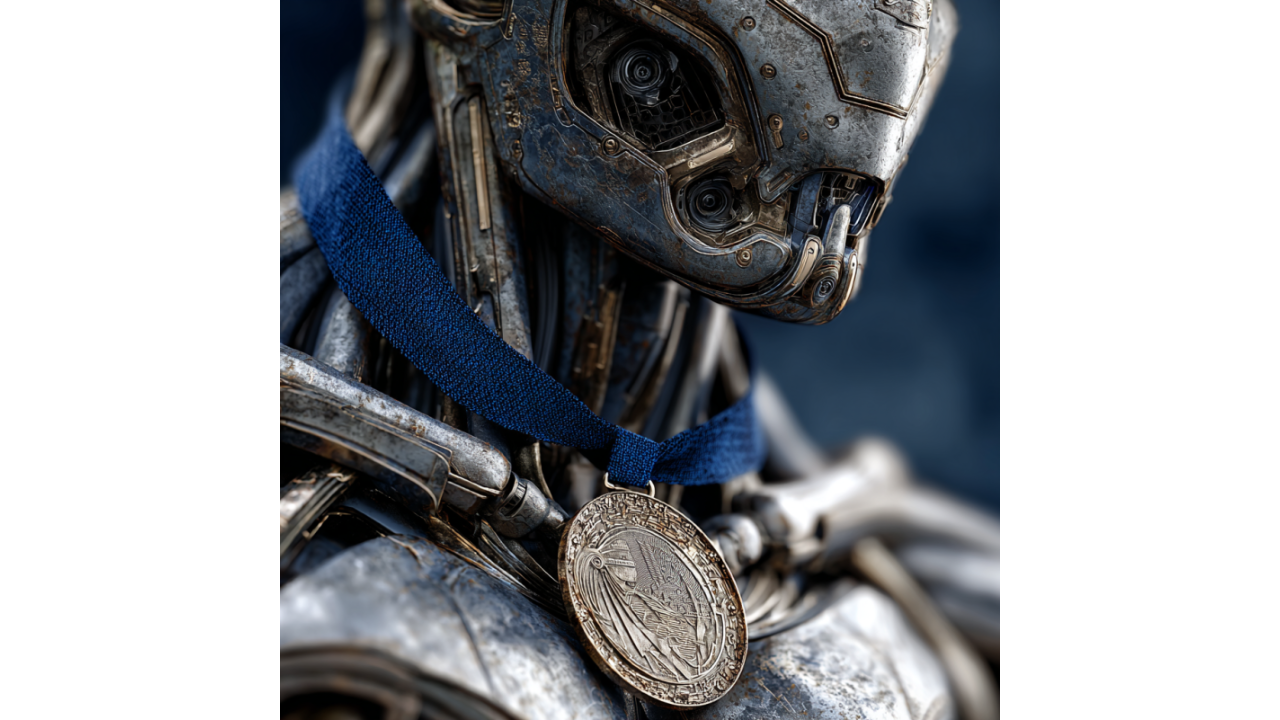AlphaProof and the IMO Silver Medal: When AI Actually Solves Hard Problems
Most AI math announcements deserve skepticism. Models that ace standardized tests but collapse on novel problems. Systems that generate...
3 min read
 Writing Team
:
Nov 17, 2025 7:00:00 AM
Writing Team
:
Nov 17, 2025 7:00:00 AM

Most AI alignment conversations fixate on preventing systems from destroying humanity. Google DeepMind just published research on a different kind of alignment—teaching AI models to organize visual concepts the way humans actually do. The results suggest that mimicking human perception might solve some surprisingly practical problems.
Deep neural networks excel at specific visual tasks but collapse in unfamiliar situations. The problem isn't raw capability—it's conceptual organization. Humans structure visual understanding hierarchically, moving from fine details to abstract categories. We group a dog and a fish together as "living things" despite their radical visual differences. AI models focus on local similarities and miss these abstract connections entirely.
This creates predictable failure modes. AI systems confidently misclassify images when they encounter distributions slightly different from training data. Their confidence calibration breaks down—they express high certainty even when completely wrong. They optimize for surface-level pattern matching rather than meaningful semantic relationships.
The DeepMind, Anthropic, and German research team published in Nature introduces AligNet, a method that teaches vision models to mirror human perceptual judgments. The approach centers on a "surrogate teacher model"—a fine-tuned version of SigLIP trained on human similarity judgments from the THINGS dataset.
The technical process is straightforward. The teacher model generates "pseudo-human" similarity scores for millions of synthetic ImageNet images. These labels fine-tune various vision architectures including Vision Transformers and self-supervised systems like DINOv2. The aligned models learn to group images according to human conceptual hierarchies rather than just visual features.
On the new "Levels" dataset—which covers different abstraction levels with ratings from 473 people—an AligNet-tuned ViT-B model outperformed average human agreement. More importantly, alignment improved technical performance across multiple benchmarks. On some generalization and robustness tests, AligNet models more than doubled baseline accuracy.
The models reorganized their internal representations fundamentally. After alignment, they grouped objects by semantic meaning rather than surface appearance. Lizards moved closer to other animals in the model's embedding space, not just to similarly colored plants. This isn't cosmetic—it reflects different computational strategies for processing visual information.
On adversarial ImageNet-A, aligned models improved accuracy by up to 9.5 percentage points. They handled distribution shifts better on the BREEDS benchmark. Their confidence calibration improved substantially—uncertainty estimates tracked more closely with actual accuracy, similar to human response time patterns.
This matters because most production vision systems break silently. They fail confidently on edge cases, providing no indication that their predictions are unreliable. A model that knows when it doesn't know becomes substantially more useful in real deployments where you can't manually verify every prediction.
The researchers released all training data, code, and model checkpoints openly. They provide eight different model variants—SigLIP, DINOv2, CapPa, ViT, CLIP, and others—each in base, aligned, and control versions. This enables direct comparison of how alignment affects different architectures.
The team explicitly warns against treating human-likeness as the ultimate goal. Human perceptual judgments carry cultural and personal biases. Perfect replication of human vision would replicate human limitations and blind spots. The goal isn't making AI maximally human—it's borrowing useful aspects of human perceptual organization while retaining AI's distinct advantages.
For marketing and content applications, perceptually aligned models could improve image search, visual similarity matching, and automated tagging systems. When your image recognition system groups products the way customers actually think about them rather than how they superficially appear, recommendations and search both improve.
But this remains research-stage technology. The paper demonstrates capability on benchmarks, not production systems under real-world constraints. The alignment process requires substantial compute resources and carefully curated human judgment data. Scaling to domains beyond ImageNet categories presents non-trivial challenges.
This work highlights an underappreciated aspect of AI alignment—ensuring models share human conceptual frameworks, not just human values. A vision system that sees "dog" and "fish" as unrelated despite both being animals will fail to generalize properly. An AI that organizes concepts fundamentally differently than humans will surprise us in unpredictable ways.
The approach differs sharply from typical AI safety research. Instead of constraining behavior through reward shaping or constitutional principles, AligNet restructures the model's internal representations to match human cognitive organization. The result is systems that fail less mysteriously because they categorize the world more like we do.
Whether this generalizes beyond vision remains unclear. Language models already train on human-generated text, implicitly learning human conceptual structures. The equivalent of AligNet for reasoning or planning would require understanding human cognitive hierarchies in those domains—substantially harder than visual perception.
For now, we have evidence that teaching AI to perceive like humans improves robustness, generalization, and calibration. That's valuable. Whether it contributes to broader AI alignment questions about safety and control depends on whether similar techniques apply to more complex cognitive tasks.
If you're evaluating which AI capabilities will actually improve your marketing systems versus which represent interesting research without near-term applications, Winsome Marketing's growth strategists can help you focus resources on deployable technology rather than aspirational science.

Most AI math announcements deserve skepticism. Models that ace standardized tests but collapse on novel problems. Systems that generate...

We've watched Google chase OpenAI's shadow for two years now. Each announcement arrives with carefully managed expectations, each demo polished to...

We have a problem with AI that no amount of training data will fix: Large language models hallucinate with confidence, asserting falsehoods as...